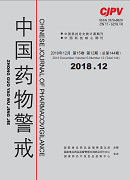|
|
Literature Review of 224 Adverse Reactions Cases Induced by Imatinib
ZHU Hongmei
2018, 15(12):
733-737.
Objective To pay more attention to the adverse drug reactions induced by imatinib and provide references for rational use of drugs. Methods Using "imatinib", "gleevec", "adverse reaction"and "to"as key words, the articles in the CNKI database from January 2000 to March 2018 were searched and retrieved. Fifty-five references which met the inclusion and exclusion criteria were extracted and analyzed. Results 224 cases were extracted. There were more male patients than female patients, and more elderly patients. Chronic myeloid leukemia and gastrointestinal stromal tumors were the primary diseases. Systems and organs mainly involved in adverse reactions were blood, skin and its appendages, general reactions, cardiovascular, urinary, liver, gallbladder and respiratory systems. The main clinical manifestations were neutropenia, thrombocytopenia, elevated SGOT/SGPT, etc. Other clinical manifestations were erythema multiforme, edema, fluid retention, myalgia, muscle pain spasm and abnormal function of liver and kidney. Conclusion Clinical application of imatinib should be highly alert to adverse reactions; drug monitoring, risk communication and rational drug use guidance should be strengthened; so as to improve drug safety.
References |
Related Articles |
Metrics
|
